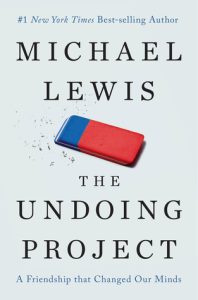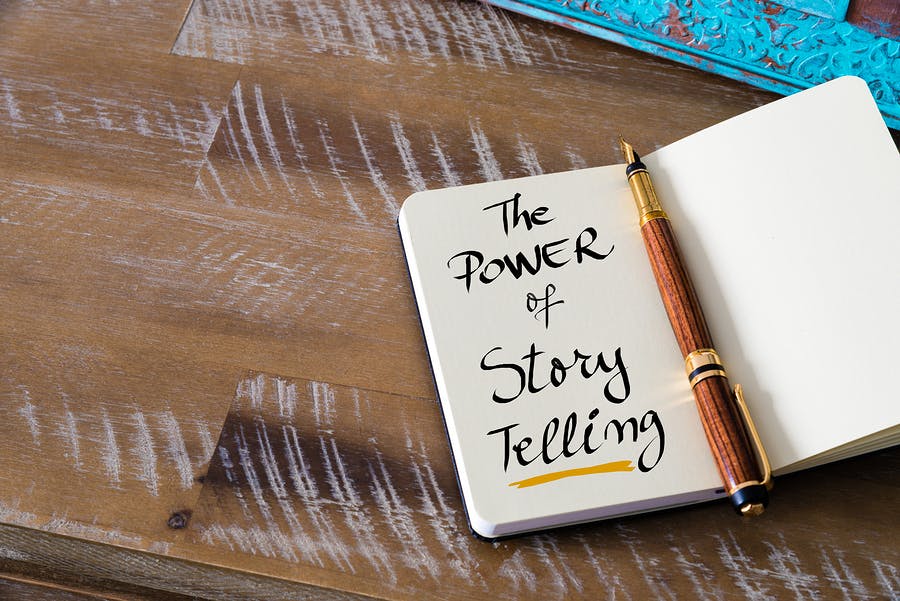Trying to sell a new idea or program to senior leadership? Or showcase your organization’s features to win a corporate award or land a grant? We’ve all been told that “making the business case” comes down to having good data. But while data is critical, it’s not everything.
Just now I’m reading The Undoing Project by Michael Lewis. Lewis is the brilliant writer responsible for such recent non-fiction classics as Moneyball, The Blind Side and The Big  Short. In case you haven’t heard about this latest book, it’s the story of Daniel Kahneman and Amos Twersky, two Israeli psychologists who turned on its head the world’s understanding of how people judge situations, predict the future and make decisions.
Short. In case you haven’t heard about this latest book, it’s the story of Daniel Kahneman and Amos Twersky, two Israeli psychologists who turned on its head the world’s understanding of how people judge situations, predict the future and make decisions.
In the process, they launched a new field, behavioral economics. Khneman won the Nobel Prize in 2002, not for psychology — is there such a thing? — but for economics. Twersky would have shared it, but he died six years before.
Data alone changes nothing
I’m not quite done with the book, but I’m more than halfway through, and our heroes have just come to a realization that I think many of us have intuited all along. Yes, they are geniuses and all, so they came to it a lot more scientifically, but here it is: people’s behavior, choices, and decisions don’t change based on data. They change based on stories — the stories people tell themselves or others tell them. Even if the data (or in the case of these men’s research, the statistical probability) doesn’t back these stories up.
(There is a “meta” element to this tale, too. What makes author Michael Lewis so good at what he does — what gives him his own outsized impact on the world — is precisely the fact that he is such a good storyteller. He knows how to take technical, data-heavy narratives and turn them into stories so gripping they not only become best-sellers, they get made into blockbuster movies–three times so far, and counting.)
In any case, Twersky and Kanneman were trying to figure out a way to make people better decision-makers; to make judgments and decisions based on facts. They found that pre-existing stories inevitably get in the way of these facts. What their findings have made me think about, though, is the value of supporting facts with stories, and how this applies to business presentations, employee communications, “best company” award applications and more.
Numbers can’t do it alone
Of course numbers, themselves, can tell a powerful story. Saying that turnover is down by 20% a year after instituting a new, paid parental leave policy is a powerful statement. Pointing out precisely how much productivity has improved among employees working flexibly carries a lot of weight. If you are trying for a corporate diversity award, providing the actual increase in hiring or promotion rates among certain groups of workers is meaningful.
It’s all about making one connection
But as been long known to those in the non-profit world, numbers alone don’t persuade. In fact, in some cases they can have the adverse effect of deadening our response. That’s why when you read or see an appeal from a charitable organization it doesn’t waste a lot of paper telling you about the thousands or millions afflicted. It tells you the story of one family, one child, one puppy. In fact, the very funding model for many of these organizations is based on this concept.
When you sponsor a child through “Save the Children” or donate a goat through Heifer International, your donation is certainly used, and probably used wisely. But the funds aren’t going directly to that child, and they might not be used toward a goat. To quote language embedded deep in the Save the Children website, “experience has taught us that the most effective way to help children is by combining your sponsorship with those of other sponsors and donors–rather than just giving it directly to your sponsored child.” Why don’t they just ask for general funds to support their work then? Because they know most people are more likely to give if they connect, via a life story, with one particular child.
Don’t get me wrong. These are great organizations, and I support them, and others like them, whenever I can. The point is, though, that they’re persuading me, and millions of others, to part with our money based on a story — a particular case out of thousands or millions. (I am not saying these stories aren’t true, by the way; as far as I know, they are.) Even those charitable organizations that don’t share this funding model, nonetheless almost always use particular, specific stories about individuals to win your support.
Convince with stories
So now we have years of experience by charities and advocacy organizations, backed up by the science of a Nobel laureate. Isn’t it time you got on board?
The next time you’re trying to get funding for a program, or win a prize for your organization, or persuade leaders to take a step of any sort, remember the power of the story. Present the best, most compelling numbers you can, of course, but also share the words of employees who have benefited, and the narrative about how, precisely, they did. How and why did — or will – this program make a difference in someone’s life? And how, in turn, does that difference make a difference for your company?
As I always say, you can’t win if you can’t tell your story.
